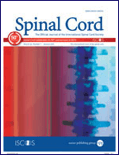
SPINAL CORD
Scope & Guideline
Innovating solutions for spinal cord disorders.
Introduction
Aims and Scopes
- Clinical Assessment and Rehabilitation:
Research on various clinical assessments, rehabilitation techniques, and interventions for spinal cord injury (SCI) patients, including physical therapy, neurorehabilitation, and the development of standardized assessment tools. - Psychosocial Impact and Quality of Life:
Investigations into the psychosocial aspects of living with SCI, including quality of life, mental health, and community reintegration. - Pathophysiology and Neurobiology:
Studies exploring the underlying biological mechanisms of spinal cord injuries, including neuroinflammation, neuroprotection, and regenerative strategies. - Innovative Therapeutic Approaches:
Research into new therapeutic approaches, including pharmacological treatments, neuromodulation techniques, and technology-based interventions like robotic rehabilitation and virtual reality. - Longitudinal and Epidemiological Studies:
Analysis of long-term outcomes, epidemiological trends, and risk factors associated with spinal cord injury, including demographic studies and healthcare utilization. - Patient-Centered Research:
Focus on patient-reported outcomes, experiences, and engagement in research, emphasizing the importance of patients' perspectives in treatment and rehabilitation.
Trending and Emerging
- Telehealth and Remote Rehabilitation:
With the rise of telehealth, there has been increased interest in remote rehabilitation techniques and their effectiveness for individuals with spinal cord injuries, especially in the context of the COVID-19 pandemic. - Multidisciplinary Approaches to Care:
A trend towards multidisciplinary approaches that incorporate various healthcare professionals in the management of spinal cord injuries, emphasizing the importance of holistic care. - Technological Innovations in Rehabilitation:
Emerging research focuses on the use of technology, such as virtual reality, robotics, and wearable devices, to enhance rehabilitation outcomes for spinal cord injury patients. - Psychosocial Interventions:
Growing recognition of the importance of psychosocial factors in recovery, leading to an increase in studies exploring mental health support and community integration for individuals with spinal cord injuries. - Longitudinal and Predictive Studies:
An increase in longitudinal studies that aim to identify predictors of outcomes over time, helping to inform better clinical practices and interventions for spinal cord injury patients. - Patient Engagement and Empowerment:
Research that emphasizes patient engagement in their own care and decision-making processes is on the rise, reflecting a shift towards more patient-centered approaches in rehabilitation.
Declining or Waning
- Historical Perspectives and Case Studies:
There has been a noticeable reduction in the number of papers focusing on historical analyses or singular case studies related to spinal cord injury, as the journal shifts towards more systematic and broader studies. - Basic Science Research without Clinical Application:
Research that remains strictly within the realm of basic science without clear clinical relevance or application has become less common, as there is a stronger focus on translational research. - Single-Dimensional Studies:
Publications that focus solely on one-dimensional aspects of spinal cord injuries, such as isolated physiological metrics without considering broader implications or multi-faceted approaches, are becoming less frequent. - Non-Interventional Descriptive Studies:
There has been a decline in purely descriptive studies that do not propose interventions or solutions, as the journal increasingly favors research that contributes to practical clinical applications. - Traditional Rehabilitation Techniques:
Research specifically centered on traditional rehabilitation techniques without integration with modern technologies or innovative practices is diminishing, reflecting a shift toward more advanced methodologies.
Similar Journals

Journal of Neurorestoratology
Unlocking the future of cognitive restoration.The Journal of Neurorestoratology, published by TSINGHUA UNIV PRESS, stands as a pivotal resource in the evolving fields of neuroscience and rehabilitation. With focus areas encompassing cognitive neuroscience and neurological disorders, this Open Access journal, launched in 2013, fosters unimpeded global access to cutting-edge research and breakthroughs in neuro-restorative techniques and therapies. Although it is relatively new, it has demonstrated its potential impact within the academic community, ranking in the 51st percentile for Medicine _ Rehabilitation and contributing novel insights in the realms of speech and hearing, neurology, and cognitive neuroscience. With its commitment to disseminating innovative findings and promoting interdisciplinary collaboration, the Journal of Neurorestoratology plays a crucial role in advancing our understanding and management of neuro-rehabilitation, making it a valuable platform for researchers, healthcare professionals, and students alike.
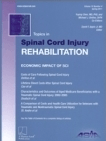
Topics in Spinal Cord Injury Rehabilitation
Fostering Knowledge for Optimal Recovery SolutionsTopics in Spinal Cord Injury Rehabilitation is a premier journal dedicated to advancing research and clinical practices in the field of spinal cord injury rehabilitation. Published by the American Spinal Injury Association, this journal focuses on providing up-to-date insights and innovative strategies to enhance recovery and quality of life for individuals with spinal cord injuries. With an impressive trajectory from 1998 to 2024, it is recognized within the Q2 category for Neurology (clinical), Physical Therapy, Sports Therapy and Rehabilitation, and Rehabilitation as of 2023. Although the journal is not open access, it remains a critical resource for healthcare professionals and researchers, boasting a solid impact in the Scopus rankings that positions it among the top quartiles in its categories. Researchers, clinicians, and students alike will find invaluable knowledge within its pages, supporting the ongoing evolution of therapeutic approaches and rehabilitation methodologies. For subscriptions and more details, contact AMER SPINAL INJURY ASSOC at 9702 Gayton Rd, Suite 306, Richmond, VA 23238, United States.

NEUROREHABILITATION AND NEURAL REPAIR
Innovating Recovery: Bridging Neurology and Rehabilitation.NEUROREHABILITATION AND NEURAL REPAIR, published by SAGE Publications Inc, is a leading journal in the fields of neurology and rehabilitation, addressing critical issues in neurorehabilitation across a broad spectrum of neurological disorders. With an impressive impact factor and consistently ranked in the Q1 category in both Neurology and Rehabilitation, this journal is esteemed for its rigorous peer-reviewed research contributing to advancements in clinical practice and rehabilitation strategies. The journal boasts an HIndex that reflects its global influence and is highly regarded among professionals and researchers, ranking in the top tiers of Scopus metrics across various categories. Since its inception in 1987, NEUROREHABILITATION AND NEURAL REPAIR has fostered innovative research aimed at improving outcomes for patients with neurological impairments, making it a crucial resource for those engaged in clinical research and therapeutic interventions. Explore this prestigious journal to stay at the forefront of developments in neurorehabilitation, with access options available for diverse readerships.

Translational Neuroscience
Transforming Research into Real-World Applications.Translational Neuroscience, published by DE GRUYTER POLAND SP Z O O, is a leading open-access journal since its inception in 2015, dedicated to the multidisciplinary exploration of neurological research and its clinical applications. With an ISSN of 2081-3856 and an E-ISSN of 2081-6936, the journal serves as a crucial platform for scholars and practitioners to disseminate innovative findings and theoretical advancements in the field of neuroscience. Covering various aspects of general neuroscience, it is ranked in the Q3 quartile for 2023 and positioned at Rank #75 out of 113 in its category, reflecting its growing impact within the scientific community. The journal strives to bridge the gap between laboratory research and clinical practice, fostering collaboration among researchers, clinicians, and educators. The editorial team is committed to maintaining high publication standards that engage the audience with rigorous research while promoting a culture of open science. For those interested in the forefront of neuroscience research, Translational Neuroscience offers an invaluable resource for knowledge and innovation.

Brazilian Neurosurgery-Arquivos Brasileiros de Neurocirurgia
Advancing Neurosurgical Knowledge GloballyBrazilian Neurosurgery-Arquivos Brasileiros de Neurocirurgia, published by GEORG THIEME VERLAG KG, is a distinguished peer-reviewed open access journal that has been making significant contributions to the field of neurosurgery since its transition to open access in 2015. This Brazilian journal, which is accessible to a global audience, aims to disseminate high-quality research articles, reviews, and case reports that enhance the understanding and practice of neurosurgery and clinical neurology. Despite its current ranking in the Q4 category for both neurology and surgery in 2023, the journal is committed to improving its impact and accessibility for researchers, medical professionals, and students worldwide. As an important platform for innovative ideas and discussions, it takes pride in publishing scientifically rigorous content that informs and shapes the future of neurosurgical practices. With the rise of open access publishing, Brazilian Neurosurgery aligns itself with contemporary trends, making vital research readily available to its diverse readership while nurturing academic collaborations within the neurosurgical community.
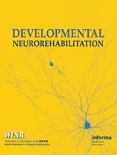
Developmental Neurorehabilitation
Exploring the frontiers of developmental neuroscience.Developmental Neurorehabilitation is an esteemed journal published by Taylor & Francis Inc, dedicated to advancing the field of developmental neuroscience and rehabilitation. With an ISSN of 1751-8423 and an E-ISSN of 1751-8431, this journal serves as a vital resource for researchers, clinicians, and students interested in innovative therapeutic approaches and rehabilitation techniques for children and adolescents. Since its inception in 1997, Developmental Neurorehabilitation has focused on disseminating high-quality research, contributing to a deeper understanding of recovery processes in developmental disorders, and facilitating interdisciplinary dialogue among professionals. With its recognition in Q2 and Q3 quartiles across prominent categories such as Pediatrics and Rehabilitation, it stands out as a pivotal publication in its field, boasting Scopus rankings that reflect its significant impact—ranked #53 in Rehabilitation and #139 in Pediatrics, among others. While maintaining a commitment to quality research, the journal does not currently offer open access but remains accessible through institutional subscriptions, further enriching the academic landscape with critical insights into rehabilitation methodologies for developmental challenges and promoting better clinical practices to improve patient outcomes.

NEUROSURGICAL REVIEW
Elevating the standards of neurosurgical research and practice.NEUROSURGICAL REVIEW is an esteemed journal dedicated to advancing the field of neurosurgery, published by Springer, one of the leading global publishers in academic research. With a distinguished history dating back to 1978, this influential journal serves as a vital resource for researchers, practitioners, and students, providing a platform for high-quality original research, case studies, and reviews that push the boundaries of knowledge in neurosurgery. The journal enjoys a remarkable reputation, holding a Q1 ranking in Medicine (miscellaneous) and Surgery, alongside a robust Q2 in Clinical Neurology as reported in 2023. Furthermore, it is recognized in Scopus with notable rankings, placing it in the 88th percentile in Surgery and the 68th percentile in Clinical Neurology. Although it does not offer open access, NEUROSURGICAL REVIEW remains pivotal in disseminating critical findings and fostering collaboration within the neuroscience community. As it continues to evolve through its convergence years up to 2024, the journal aims to address emerging challenges and innovations in the field, making it an essential publication for anyone involved in neurosurgical research and practice.
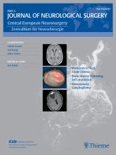
Journal of Neurological Surgery Part A-Central European Neurosurgery
Championing the future of neurology and surgery.The Journal of Neurological Surgery Part A – Central European Neurosurgery is a prominent peer-reviewed publication dedicated to advancing the field of neurosurgery and its related disciplines. Published by THIEME MEDICAL PUBL INC and based in Germany, this journal has been a platform for critical advancements in clinical neurology and surgery since its inception in 2012, and it is set to continue through 2024. With a current impact factor reflecting its influence in the medical community, the journal ranks in the Q3 quartile across the categories of Medicine (miscellaneous), Neurology (clinical), and Surgery for 2023, ensuring a robust participation from the academic and medical professionals alike. It is indexed in Scopus, highlighting its global recognition, with rankings of #248/551 and #257/400 in the fields of Medicine & Surgery and Neurology, respectively. The journal features a range of open access options, thereby facilitating unrestricted dissemination of high-quality research to a wide audience. As a valuable resource, it aims to promote the exchange of innovative ideas and research findings that can contribute to clinical practice and improve patient outcomes in neurosurgery.

Asian Spine Journal
Empowering Orthopedic Innovations for a Healthier FutureAsian Spine Journal is a leading open-access journal dedicated to the rapid dissemination of high-quality research in the field of orthopedics and spine surgery. Published by the Korean Society of Spine Surgery, the journal has made significant strides since its inception, achieving a remarkable Q1 ranking in both Orthopedics and Sports Medicine, as well as Surgery, according to the 2023 category quartiles. With an impact factor reflected in its impressive Scopus rankings—#78 out of 551 in Medicine Surgery and #65 out of 321 in Medicine Orthopedics and Sports Medicine—this journal serves as an invaluable resource for researchers and practitioners alike. The Asian Spine Journal provides an open access platform that fosters global collaboration, allowing for wider accessibility to groundbreaking research. Based in Seoul, South Korea, this journal is committed to advancing knowledge and practice in spine care, supporting the latest innovations and discussions pertinent to spinal health and treatment options effective for a diverse patient population. Whether you are a researcher, a clinician, or a student, the Asian Spine Journal is essential for staying at the forefront of developments in spine surgery and orthopedic medicine.
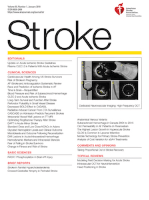
STROKE
Exploring Innovations in Neurological and Cardiovascular HealthSTROKE is a premier academic journal published by Lippincott Williams & Wilkins, dedicated to advancing the fields of neurology, cardiology, and specialized nursing. With an impressive impact factor and consistently ranked in the Q1 category across multiple disciplines—such as Advanced and Specialized Nursing, Cardiology, and Neurology—this journal serves as a crucial platform for researchers and healthcare professionals. It spans a rich historical context from 1970 to 2024, offering invaluable insights into stroke research and related cerebral vascular issues. The journal is committed to disseminating high-quality research that informs clinical practices and guides policy-making in public health. With a focus on empirical studies and clinical trials, STROKE stands as an essential resource for those invested in the complexities of neurological interventions and cardiovascular health. Ensure your access to this influential publication as it shapes the future of medical science and patient care.